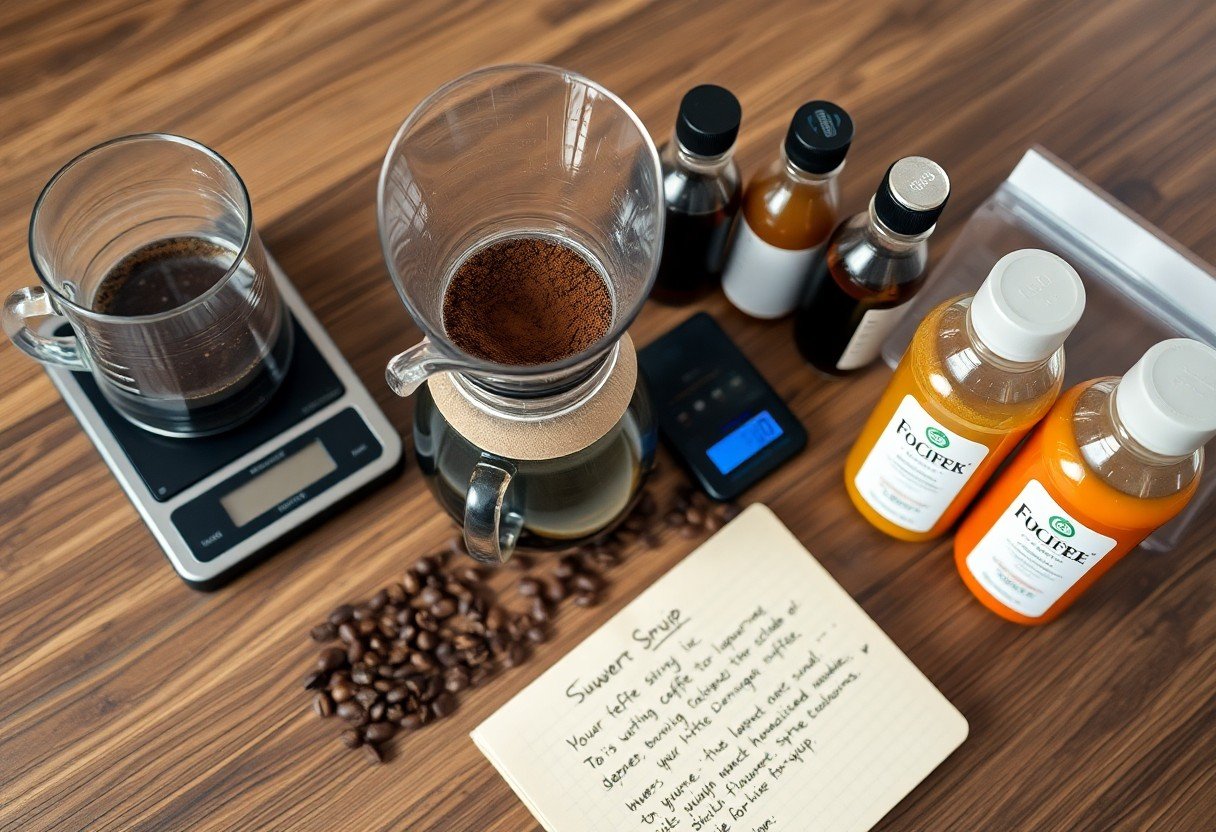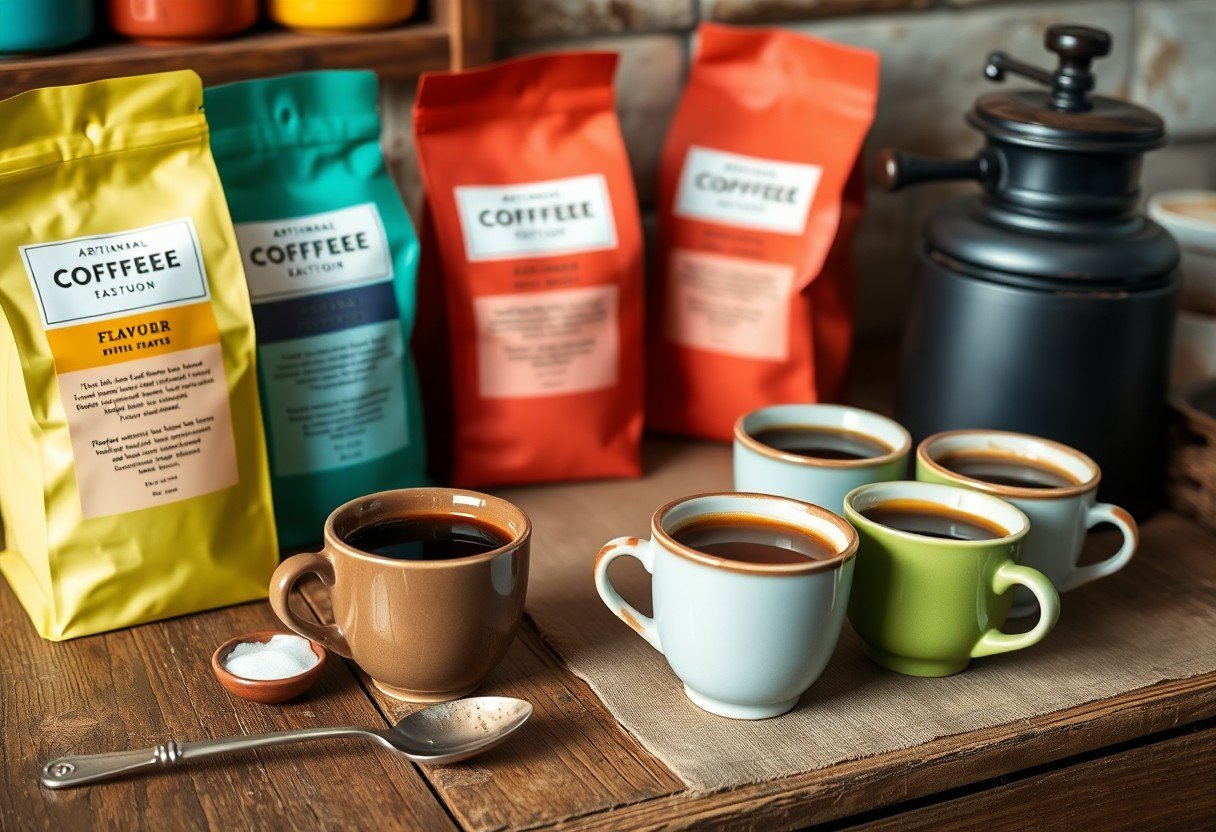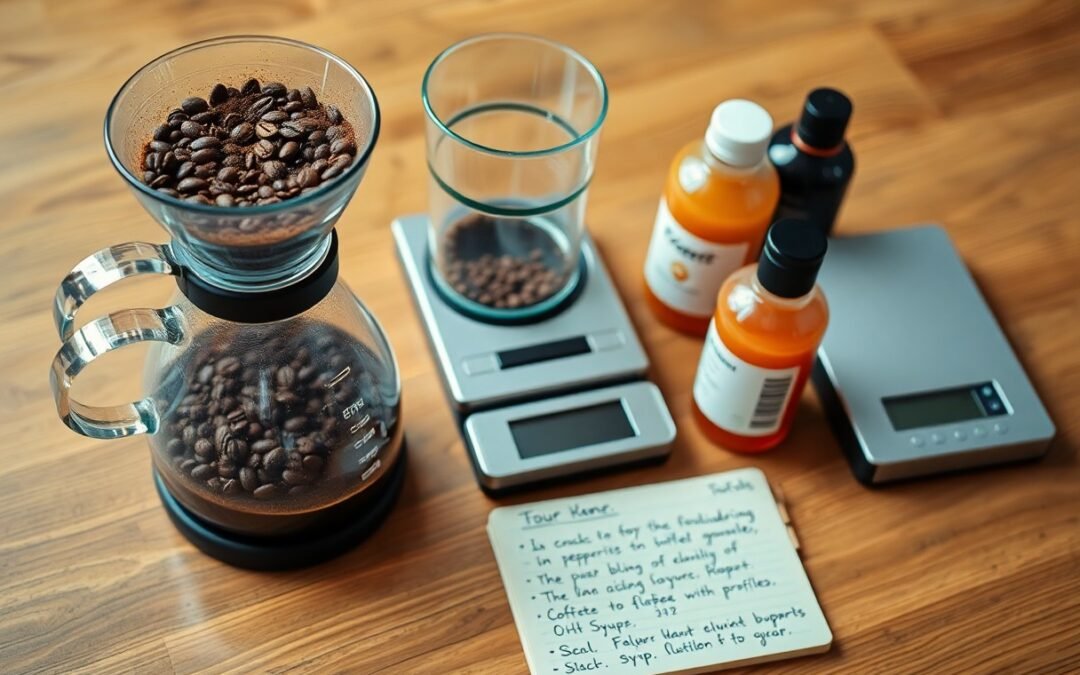Just like a fine wine, artisan coffee offers a variety of flavor profiles that can be tailored to your preferences. By understanding the different beans, brewing methods, and flavor notes, you can create a personalized coffee experience that suits your palate perfectly. This guide will equip you with the knowledge needed to explore and customize the diverse world of artisan coffee, allowing you to enjoy a cup that reflects your unique taste. Dive in and discover how to make your coffee moments truly special.
Unlocking the Secrets of Coffee Beans
Understanding the nuances of coffee beans forms the foundation of your brewing journey. Each bean carries unique characteristics influenced by various factors, including soil composition, climate, and processing methods. Familiarizing yourself with these elements allows you to tailor your brew to fit your palate more precisely, transforming your coffee experience from ordinary to extraordinary.
The Impact of Origin on Flavor
The geographical origin of coffee beans plays a significant role in their flavor profiles. Beans from Ethiopia often exhibit bright acidity and floral notes, while those from Colombia are known for their smooth, well-balanced flavors with nutty undertones. Understanding these regional distinctions can help you select beans that align with your taste preferences, enhancing your overall enjoyment of the brew.
Varietal Differences and Their Flavor Profiles
Within coffee production, varietals emerge as crucial factors in flavor diversity. Varietals like Arabica and Robusta showcase distinct taste characteristics, with Arabica generally offering a sweeter, more complex profile, while Robusta tends to deliver stronger, earthier flavors and higher caffeine content. Exploring these varietal differences enables you to discover coffee that perfectly matches your desired flavor experience.
Focusing on varietals reveals how specific strains influence taste. For instance, Geisha is renowned for its exquisite floral and jasmine notes, often fetching high prices due to its rarity and unique profile. In contrast, typical Arabica varieties such as Bourbon and Typica provide rich, sweet flavors with varied acidity levels. By experimenting with different varietals, you can uncover hidden gems that transform your coffee rituals into personalized experiences, making each cup a delightful adventure.

The Art of Brewing: Techniques That Transform
Brewing coffee is an art that significantly influences flavor. Mastering different techniques allows you to enhance specific notes and aromas from the coffee beans, tailoring each cup to your personal palate. From precise extraction times to grind sizes, understanding these factors can elevate your coffee experience. Experimenting with various methods will help you discover your preferred taste profile, unveiling the subtle complexities that great artisan coffee offers.
Brew Methods: From French Press to Espresso
Each brewing method brings out unique characteristics in your coffee. The French Press, for instance, encourages full-bodied flavors, while espresso extracts concentrated intensity, revealing deeper notes. Pour-over techniques highlight brightness, allowing you to appreciate the inherent flavors of single-origin beans. By trying different methods, you can identify which approach appeals most to your sense of taste.
Water Temperature and Its Effects on Taste
The temperature of water used during brewing plays a significant role in flavor extraction. Optimal brewing temperatures typically range from 195°F to 205°F. Water that is too hot can scorch the beans, leading to bitter flavors, while cooler water might result in under-extraction, yielding a sour taste. Fine-tuning the temperature can help you unlock the full potential of your coffee’s flavor profile.
Water Temperature and Its Effects on Taste
| Temperature Range | Possible Effects |
|---|---|
| 190°F – 200°F | Balanced extraction, highlighting sweetness and acidity. |
| Above 205°F | Increased bitterness, potential over-extraction. |
| Below 195°F | Under-extraction, resulting in sour or weak flavors. |
Adjusting water temperature not only affects extraction efficiency but also impacts your overall taste experience. Higher temperatures often accentuate bitterness and can drown out the delicate nuances of your coffee. In contrast, brewing with slightly cooler water can draw out more refined flavors, leading to a sweeter, more complex cup. Testing different temperatures allows you to personalize your brewing process while discovering the optimal conditions for your unique taste preferences.
Flavor Elements and Tasting Notes Decoded
Deciphering coffee’s flavor elements equips you to appreciate the complexities in every cup. Various characteristics like acidity, body, and sweetness contribute to a coffee’s overall profile, shaping your tasting experience. Understanding these elements not only enhances your brewing techniques but also helps you select beans or blends that align with your palate preferences. You’ll discover unique tasting notes, from fruity to nutty, allowing you to dive deeper into the vast world of artisan coffee.
Understanding Acidity, Body, and Sweetness
Acidity in coffee provides brightness and liveliness, often comparable to vibrant fruits. A coffee’s body refers to its heaviness on the palate, where lighter bodies feel crisp and fuller bodies give a dense, rich sensation. Sweetness balances bitterness, enhancing overall flavor harmony. Recognizing the interplay of these elements allows you to appreciate different coffee styles and to tailor your choices based on what you enjoy most.
The Role of Aroma in Flavor Perception
Aromas significantly influence how you perceive flavor, often shaping your expectations before you even take a sip. The olfactory receptors linked to taste result in a multisensory experience, where over 80% of what you taste is derived from what you smell. For instance, a coffee with floral notes might seem lighter and fresher, while earthy aromas can evoke a robust, deep flavor. Paying attention to aroma can elevate your coffee tasting experience, leading you to discover nuanced flavors and elevate your appreciation for various blends.

Tailoring Your Coffee Experience
Customizing your coffee experience is an exciting journey that allows you to explore and fine-tune flavors to your exact liking. By adjusting various brewing elements and incorporating unique ingredients, you can create a cup that truly resonates with your palate. Every sip can reflect your personality, making coffee not just a beverage but a personal statement.
Customizing Brewing Variables for Personal Preference
Tweaking brewing variables can dramatically change your coffee outcome. Consider factors like grind size, water temperature, and brew time. For instance, a finer grind paired with a longer brew time can enhance extraction, enriching flavor complexity. Experiment with different ratios of coffee to water; a stronger concentration might satisfy those who enjoy bold flavors, while a more diluted cup caters to lighter preferences.
Experimenting with Additives: Spices, Creamers, and Sweeteners
Additives can elevate your coffee to an entirely new level. Whether it’s a hint of cinnamon, a splash of cream, or a touch of honey, these ingredients can complement and highlight different flavor notes. Don’t shy away from experimenting with various combinations to find your signature touch.
Adding spices like nutmeg or cardamom introduces exotic undertones, while flavored creamers can impart richness and sweetness, transforming a regular cup into a dessert-like indulgence. For sweeteners, consider alternatives like agave nectar or maple syrup, each bringing distinct flavors. You might even try combining different additives, such as a sprinkle of cocoa with cream for a mocha-inspired twist. This exploration not only personalizes your drink but can also lead to unexpected and delightful discoveries in flavor combinations.
From Hobbyist to Home Barista
Transitioning from casual coffee drinker to home barista elevates your brewing experience and empowers you to explore diverse flavors. This journey invites you to experiment with various techniques, equipment, and beans, enhancing your appreciation and understanding of coffee’s complexities. You become not just a consumer, but a creator, with each cup reflecting your personal taste and style.
Essential Equipment for Flavor Experimentation
To begin your transition into a home barista, invest in vital equipment that enhances your brewing capabilities. A quality burr grinder ensures consistent grind size, while a versatile brewing device, like a pour-over or espresso machine, opens up a world of flavor extraction options. Additionally, a scale and thermometer empower precision in your measurements and temperatures, vital for achieving optimal taste.
Tips for Keeping a Coffee Flavor Journal
Documenting your coffee experiences helps refine your palate and brewing skills. Record the coffee type, roast level, brewing method, and flavor notes each time you make a cup. This serves as an invaluable reference, allowing you to track what you enjoy and replicate successful brews. Consistency in your entries fosters deeper insights into flavor preferences and enhances your ability to experiment confidently.
- Choose a notebook or app that suits your style.
- Include details like origin, roast date, and brew method.
- Note flavors experienced and any adjustments made.
- Review your entries periodically to detect patterns.
- This practice cultivates a deeper connection to your brewing journey.
Capturing your coffee experiences in a journal not only improves your understanding but also enriches enjoyment. You may find that certain beans suit your taste better based on past brews. Over time, this resource becomes a personalized guide, revealing trends in your preferences and inspiring new flavor explorations.
- Incorporate tasting notes from various brewing methods.
- Experiment with flavor descriptors like fruity, nutty, or spicy.
- Be open to revisiting entries to track your evolving tastes.
- Use comparisons to highlight what works and what doesn’t.
- This approach transforms your brewing into a thoughtful, informed practice.
Final Words
Upon reflecting, you can enhance your coffee experience by experimenting with various brewing methods, bean origins, and flavor additives to tailor diverse artisan coffee profiles to your taste. By understanding the intricacies of different roasts and the impact of grind size, you unlock the potential to create a beverage that suits your palate perfectly. Don’t hesitate to explore seasonal flavors and unique pairings, as this journey of customization will ultimately lead to a richer appreciation of your coffee moments.
FAQ
Q: What are the key factors that influence the flavor profile of artisan coffee?
A: Key factors include the origin of the beans, processing method (washed, natural, honey), roast level (light, medium, dark), grind size, and brewing technique (pour-over, espresso, French press). Each factor contributes uniquely to the final flavor experience.
Q: How does the origin of coffee beans affect flavor?
A: Different regions produce beans with distinct flavor characteristics. For example, Ethiopian coffees often have floral and fruity notes, while Colombian coffees may have a balance of sweetness and nuttiness. Experimenting with beans from various origins can help find personal preferences.
Q: What is the impact of roast levels on coffee flavor?
A: Light roasts highlight the inherent flavors of the beans, often showcasing acidity and origin notes, while dark roasts develop bold, chocolatey, and smoky flavors. Medium roasts provide a balance, combining both characteristics. Choosing the right roast level is imperative for customization.
Q: How can I adjust brewing methods to enhance coffee flavor?
A: Brewing methods alter extraction time and temperature, impacting flavor. For example, a French press produces a fuller body, while pour-over allows for more clarity and brightness. Experimenting with different brewing techniques can enhance specific flavor notes.
Q: What are some ways to personalize my coffee experience further?
A: Personalization can be achieved by adjusting brewing time, water temperature, grind size, and even adding flavorings like spices or flavored syrups. Tasting different combinations and keeping a coffee journal can help identify preferred adjustments.

